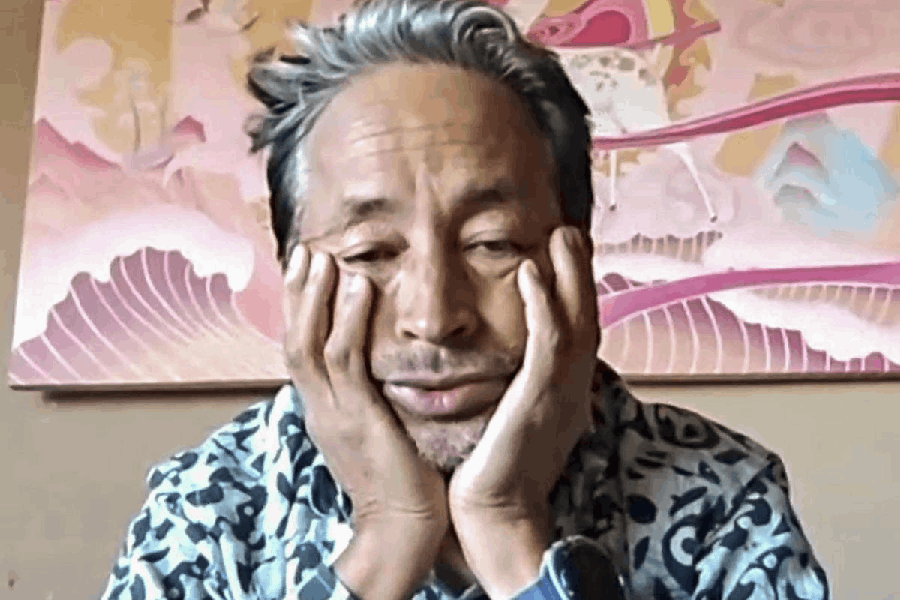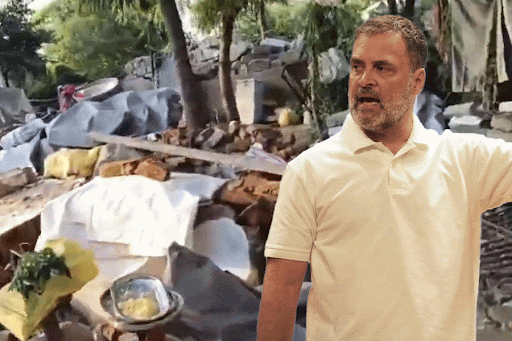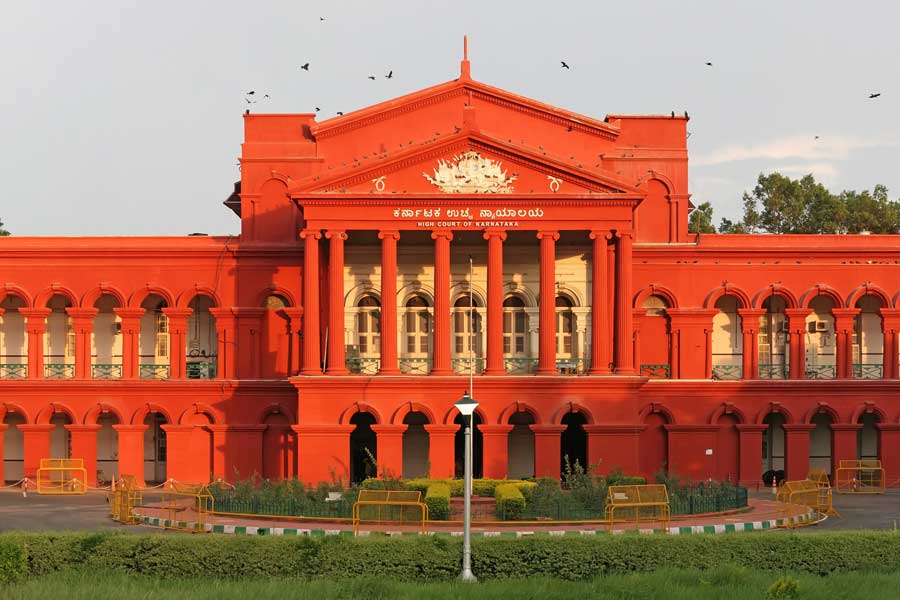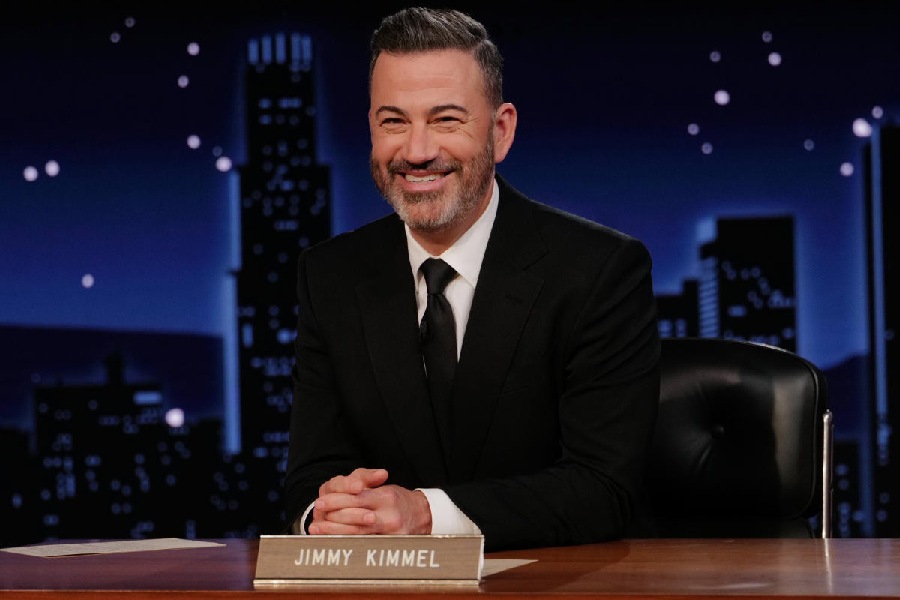YOSEMITE NATIONAL PARK
Giant sequoias, among the largest living organisms on earth, are one of the reasons Yosemite was declared a National Park.
Yosemite is roughly a three-hour drive from San Francisco, so I left my hotel early morning and reached the park around 10am, the lugs on my new hiking shoes from Decathlon, Howrah, hungry to dig into real soil. Our guide picked the Tuolumne Grove of Giant Sequoias trail for our group of Indians, one of the easiest trails (‘it’s like dessert!’).
The hike is a 4km round trip and the best part is that it’s downhill first, and uphill on the way back. After 10 minutes, we were already in the thick of things, and like true nature lovers stopped in our tracks to see flowers blooming into thimbleberries, or stood quiet to listen to a bird call that sounded like... ‘cheeseburger’! “That’s the call of the mountain chickadee, a songbird, also called the cheeseburger bird,” said our guide, as we looked at each other amazed.
All that talk of burgers made us hungry but we were not even halfway through the hike. In our bags was a lunch box packed with fresh turkey-and-lettuce sandwiches, fruit juice and some sweets. All we needed was to find a good shady spot to tuck in.
Suddenly, the path turned and a tall redwood came into sight, so majestic that we just stood there and stared, forgetting to click. Yes, it was a sequoia. “This one’s around 1,800-2,000 years old,” we were told, and it was the first of many living sequoias we spotted in the grove. Living, because there are a few standing trees that are dead, like the Dead Tunnel Tree, which you can walk through. (Psst: We felt right at home when we saw that names had been carved into the bark of the tree.)
There are many more natural wonders in Yosemite, spread across its 747,956 acres, like Glacier Point, Half Dome and High Sierra. With a few hours in hand, we settled for just Tuolumne. Another gem on the Tuolumne Grove trail is the Fallen Giant, a hollow sequoia that you can actually crawl through! Two of us were daring enough to do it (that includes me though I am not tiny) and it’s only when you’re inside that trunk on all fours, thanking your stars you wore full pants when your palm lands on a creepy-crawly, and breathing in the musty, damp smell of decaying wood, that you feel at one with the earth.



ALCATRAZ CRUISES

Break the rules and you go to prison. Break the prison rules and you go to Alcatraz
I stood inside a solitary confinement cell, a solid steel door standing between the world and me. I squinted my eyes, trying to get them accustomed to the dark so I could look around. The cell was stark apart from a hole in the ground used as a toilet. I imagined that I was a prisoner of Alcatraz. Not the regular prisoner. The isolation block or Treatment Unit was reserved for the unusually dangerous or violent inmates. The six closed-front cells were used for the most severe disciplinary problems. Treatment in “The Hole” sometimes included total darkness and a restricted diet. It usually lasted several days but never more than 19.
I snapped out of this thriller as the door opened and a camera flash went off — one of the 1.7 million annual visitors who visit Alcatraz for the dangerous chill of seeing how prisoners are locked away. I walked out of the cell and into a bright and sunny day in California, grateful for freedom. We were only halfway through the gripping audio tour in Alcatraz Island, and I already needed a Prison Break, Michael Scofield style!
If you have even a day in San Francisco, try and pencil in the Alcatraz Cruise for a few hours, even if you’re not a history buff. It’s a lovely (though choppy) ride to the island. Called The Rock because of its rocky soil and cutting winds, the picturesque island today houses nesting cormorants and seagulls, an agave trail and some parts are covered with sweet-smelling honeysuckle. A soft contrast to the tough-boned prisoners Al Capone, “Machine Gun” Kelly, Robert Stroud (Birdman of Alcatraz) and Roy Gardner (last of the great train robbers) once caged here.

GOLD RUSH, OLD SACRAMENTO
Gold Fever! Tour
Go back in time when the world rushed to Sacramento, greedy for gold!

And so we did, on a sunny day after a lunch of Shrimp Louie (in picture) on a restored riverboat called The Delta King in Old Sacramento, next to the California State Railroad Museum. After all, it was no coincidence that the American crime drama Gold, starring Matthew McConaughey, streamed on the in-flight entertainment device on my way into San Francisco. This is where it all began!
The Old Sacramento Underground Tour is the most popular tour organised by the Sacramento History Museum. But they introduced the Gold Fever! Tour this January, which is what I tried. At the start of the tour, each person is assigned a real-life character by the guide, and I was Margaret Frink! The Frinks left their successful Indiana mercantile business in 1850 and their account of the 2,418-mile journey from Marinsville, Indiana, to Sutter’s Fort, is one of the most thorough among California gold-seekers.




FARM TO FORK
Asparagus in the spring to apples in the fall, California gives shoppers a chance to come face-to-face with their food source

Shawn Harrison, 45, removes his grey cap and his blue eyes flicker in the Californian sun. He stands and points at a field of onions, his feet next to two crates of freshly-harvested pink bulbs and a box of gardening tools. Opposite the onion fields are cabbage, broccoli and cauliflower. In fact, most of the farm is filled with fresh produce, in various stages of growth.

Flashback to year 2000, and Shawn and his friend Marco Franciosa, two inexperienced organic farmers, were looking for a place to put up a farm in Sacramento, north California. They stumbled upon a piece of property. At the time, the landowner was not home so they jumped over the fence and dug in the soil and checked it, and it was beautiful soil. So they wrote a little handwritten note that said, ‘Can we grow on your land in exchange for a box of produce each week?’ and put it in the mailbox. The next day they received a call from the owner, who agreed. That’s how Soil Born Farms, an urban organic farming and education centre in Sacramento, was born.
Seventeen years later, Soil Born Farms has grown into two urban farms spread across 55 acres in Sacramento and Rancho Cordova. They do a lot of stuff but their primary focus is “having a farm in the city”. “We want to get the folks who live and work in this city reconnected with food, understand where their food comes from, hopefully getting them to eat better and then if we do our job right, get them excited about growing their food too,” says Shawn.
We stop under a peach tree, laden with sweet, juicy fruit. In the distance two workers are engrossed in the soil. “If the urban populace is not exposed to agriculture, who will fill those jobs in the future? Who will manufacture goods, teach nutrition and become farmers?” says Shawn, who did his first apprenticeship on a farm in 1993.
To “reconnect” the urban folk, there are initiatives like Grow Your Groceries, “a beginner programme designed to provide hands-on experience to the aspiring urban grower”. And Growing Together, which involves garden sites at schools. Then there is a CSA (community supported agriculture) programme, with a food box in exchange for purchase of “farm share”.
But Saturdays is when Soil Born Farms blooms its best. “Community members hang out, read books, have a cup of tea, volunteer, take classes… it is amazing to see from where we started and where we are now. We would like to see more spaces like this even if it’s a school garden acting in the capacity of what this place does,” said Shawn.
We near an activity zone where young people are playing with spades and mud. Sadly, we have almost reached the end of our tour with Shawn, in the process having crossed beds of cherry and heirloom tomatoes, snorted at an American Guinea Hog lazing in the sun and resisted plucking pomegranates off branches. Now all that’s left for us to do is sing Old MacDonald had a farm, E-I-E-I-O.

— Text and pictures: Karo Christine Kumar












